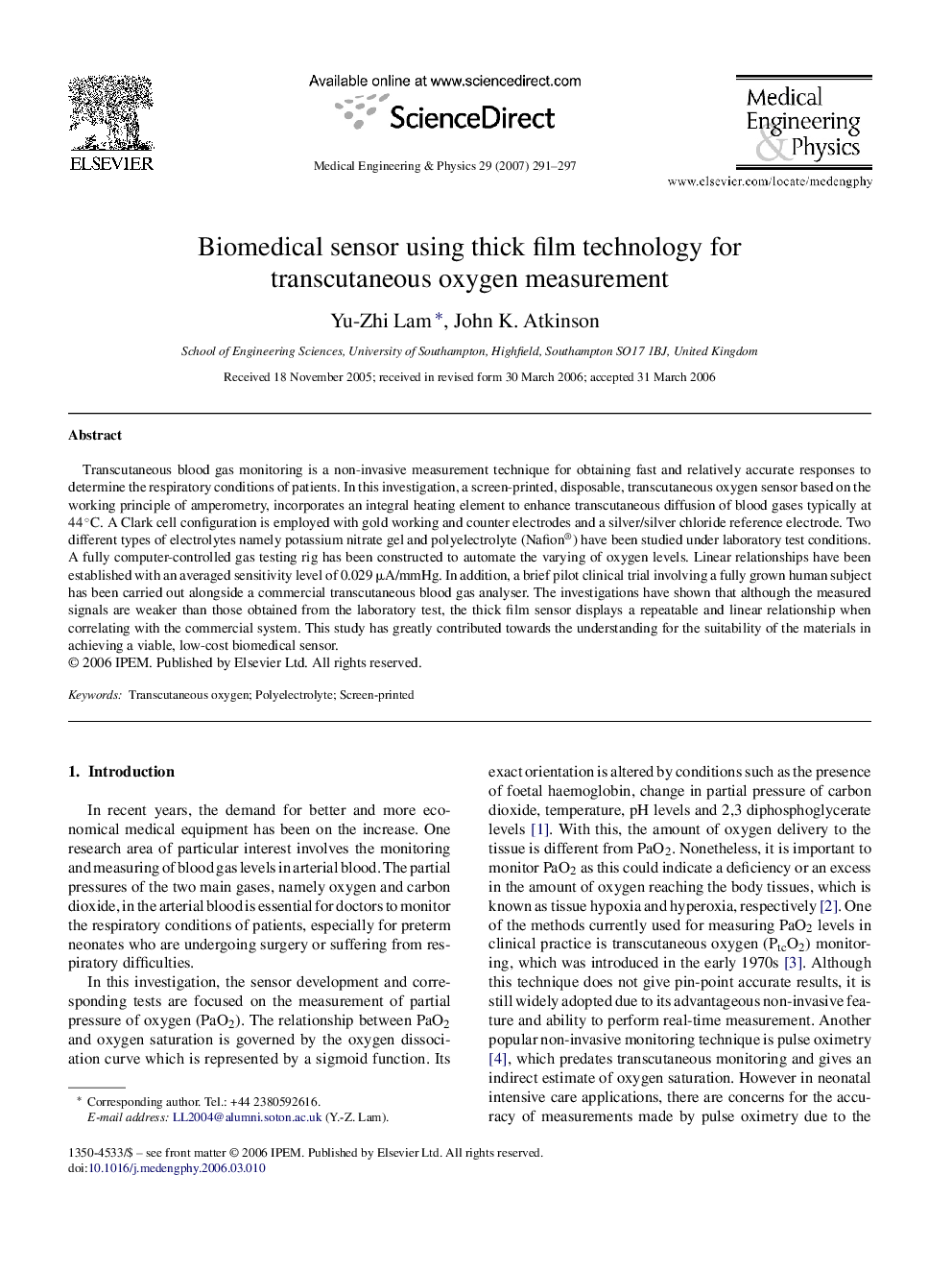| Article ID | Journal | Published Year | Pages | File Type |
|---|---|---|---|---|
| 876771 | Medical Engineering & Physics | 2007 | 7 Pages |
Transcutaneous blood gas monitoring is a non-invasive measurement technique for obtaining fast and relatively accurate responses to determine the respiratory conditions of patients. In this investigation, a screen-printed, disposable, transcutaneous oxygen sensor based on the working principle of amperometry, incorporates an integral heating element to enhance transcutaneous diffusion of blood gases typically at 44 °C. A Clark cell configuration is employed with gold working and counter electrodes and a silver/silver chloride reference electrode. Two different types of electrolytes namely potassium nitrate gel and polyelectrolyte (Nafion®) have been studied under laboratory test conditions. A fully computer-controlled gas testing rig has been constructed to automate the varying of oxygen levels. Linear relationships have been established with an averaged sensitivity level of 0.029 μA/mmHg. In addition, a brief pilot clinical trial involving a fully grown human subject has been carried out alongside a commercial transcutaneous blood gas analyser. The investigations have shown that although the measured signals are weaker than those obtained from the laboratory test, the thick film sensor displays a repeatable and linear relationship when correlating with the commercial system. This study has greatly contributed towards the understanding for the suitability of the materials in achieving a viable, low-cost biomedical sensor.
